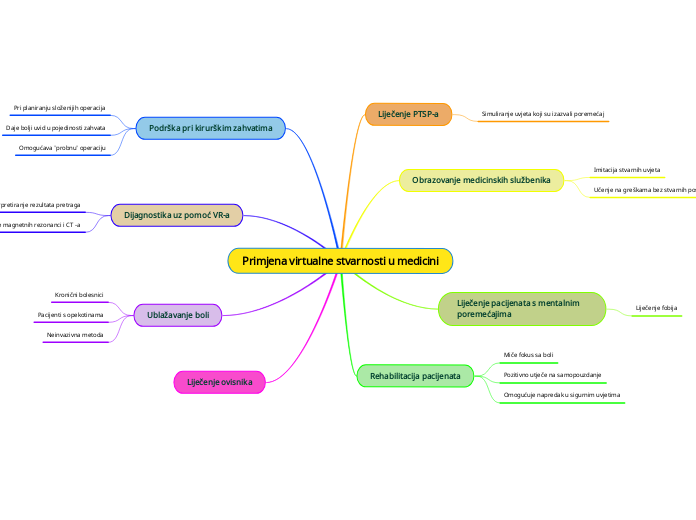ZARAZNE BOLESTI CNS-a
To name your story, you have to think about the overall message and what you want your audience to understand from the story. Also, make it relevant and easy to remember.
INTERVENCIJE MED. SESTRE
VODITI SESTRINSKU DOKUMENTACIJU
SPANJITI POSJETE U POČETKU BOLESTI
ZATAMNITI PROSTOR, OSIGURATI MIR
OSIGURATI VENSKI PUT
KOMPLIKACIJE
PARALIZA KRANIJALNIH ŽIVACA
PROMJENE KARAKTERA
ZAOSTAJANJE U PSIHIČKOM RAZVOJU
HIDROCEFALUS
SLJEPOĆA
GLUHOĆA
SEPSA
LIJEČENJE
SULFONAMIDI
ANTIBIOTICI
ANTIMIKROBNA TERAPIJA
DIJAGNOZA
ANAMNEZA
KLINIČKA SLIKA
PRETRAGE LIKVORA
LUMBALNA PUNKCIJA
SIMPTOMI
GLAVOBOLJA, BOL U LEĐIMA, ZIMICA, TRESAVICA, KONVULZIJE, SOPOR, KOME...
PROLJEV
POVRAĆANJE
TEMPERATURA
SIMPTOM TRONOŠCA
FENOMEN POLJUPCA KOLJENA
BRUDZINSKIJEV ZNAK
KERNIGOV ZNAK
UKOČENOST VRATA
DJEČJA PARALIZA
PRENOSI SE FEKOORALNIM PUTEM I ZAGAĐENOM HRANOM I VODOM
MIJELITIS (UPALA MOŽDINE)
The ending of a story is essential. We all know that if the ending is weak, what happened before loses its importance. So make it unpredictable, but fair. A resolved ending answers all the questions and ties up any loose threads from the plot.
MENINGITIS (UPALA MOŽDANIH OVOJNICA)
The middle of the story is where you add layers of complications that will lead to the end. Reveal more about the character's journey. Did their personality go through changes? How did they overcome the challenges? And as you build up the story’s central conflict, make it more personal to that character. Also, from the middle act, you have to lead into the final act.
UZROCI NASTANKA
The setting (time & place) of a story can change throughout the plot.
ŠIRENJE INFEKCIJE IZ OKOLICE
PREKO KRVI IZ UPALNOG ŽARIŠTA DOLAZI DO PROBIJANJA HEMATOENCEFALNE BARIJERE
NAKON LUMBALNE PUNKCIJE IZVEZDENE BEZ OSNOVNIH PRAVILA ASEPSE
Sensory details include sight, sound, touch, smell, and taste. These details are important because they create depth in your setting.
See a few examples below:
- the smell of fresh bread
- the scent of freshly cut grass
- rain falling onto the windshield etc.
UNOŠENJE UZROČNIKA KOD TRAUME GLAVE
The weather is an important element in your story because it can highly influence the ambiance and the mood of the characters.
PRIROĐENA ILI STEČENA KOMUNIKACIJA NOSNE ŠUPLJINE I INTRAKRANIJALNOG PROSRORA
The time of the story can also change. It can describe the event of a single day or can include an entire year's plot. Anyway, don't forget to mention it.
HEMORAGIČAN
There wouldn't be any tension and excitement in your story if there weren't any obstacles in your character's way.
SEROZNI
Your character(s) need(s) motivation in order to solve the challenge(s).
MENINGITIS UZROKOVAN ECHO I COXACKIE VIRUSOM
MENINGITIS UZROKOVAN LEPTOSPIRAMA, GLJIVAMA, SALMONELAMA, BRUCELAMA I VIRUSOM PAROTITISA
TUBERKULOZNI MENINGITIS
Secondary characters also might have motivs beacuse of which they may cross path with main character or which might trigger them to help the main character.
GNOJNI
Each story has a main character and that character usually needs to solve a problem or challenge. The character's challenge is the one that creates tension throughout the story.
MENINGITIS UZROKOVAN HAEMOPHYLUS INFLUAENZAE
Your story can take place wherever your imagination will take you to.
For example: in an elevator, in an enchanted forest, etc. Don't forget to give details of the environment each time the setting changes, otherwise, the story can be confusing. Also, mention the seasons as each of them has unique weather and events.
STAFILOKOKNI MENINGITIS
Secondary characters might also have motives that lead them to cross paths with the main character or which might trigger them to help the main character.
STREPTOKOKNI MENINGITIS
Why does your character need to confront this challenge? What does he/she expect to accomplish by solving it?
See a few examples:
- will marry in 3 days
- can fix the mistakes of the past
PNEUMOKOKNI MENINGITIS
Type in any other challenges which other characters in the story need to face.
MENINGITIS EPIDEMICA
In most stories, there are 3 challenges. The number 3 is a mystical number symbolizing completeness. Try to come up with interesting challenges with which your character needs to struggle.
See a few examples below:
- turns into a werewolf at night
- is sent back in time
ENCEFALITIS (UPALA MOZGA)
In the beginning of the story (or the exposition), you will need to introduce the setting and characters. You might also want to introduce the main conflict. This part of the story is important because it gives the reader necessary background information and maybe even a first insight into a character’s personality.
VIRUSNI ENCEFALITIS
POSTVAKCINALNI
ENTEROVIRUSNI
PROLJETNO-LJETNI KRPELJNI MENINGOENCEFALITIS










